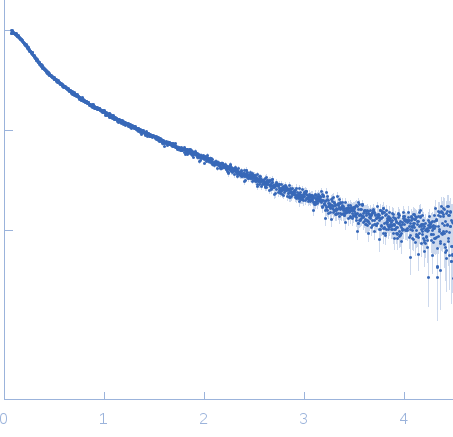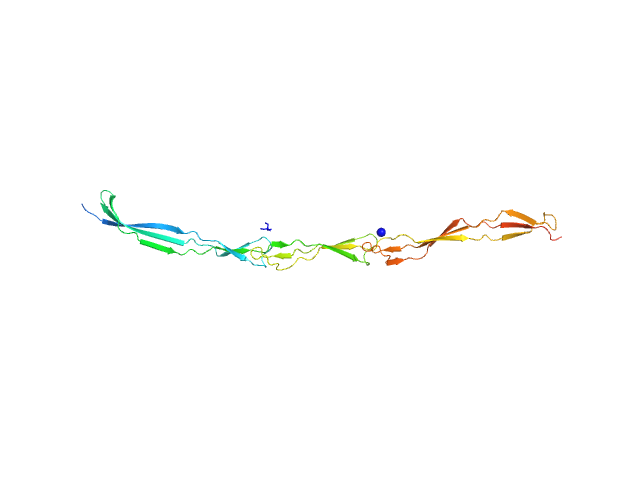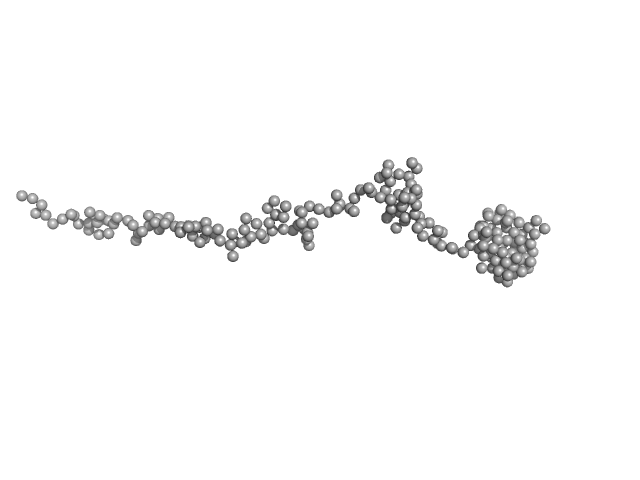| MWI(0) | 20 | kDa |
| MWexpected | 24 | kDa |
| VPorod | 29 | nm3 |
|
log I(s)
4.14×103
4.14×102
4.14×101
4.14×100
|
 s, nm-1
s, nm-1
|
|
|
|

|
|

|
|
Synchrotron SAXS
data from solutions of
Surface Protein G (SasG) EG5 repeat protein G51-G52
in
20 mM Tris 200 mM NaCl 1 mM EDTA 20 mM Tris.Cl, pH 7.5
were collected
on the
EMBL P12 beam line
at the PETRA III storage ring
(DESY; Hamburg, Germany)
using a Pilatus 2M detector
at a sample-detector distance of 3.1 m and
at a wavelength of λ = 0.12 nm
(I(s) vs s, where s = 4πsinθ/λ, and 2θ is the scattering angle).
One solute concentration of 7.50 mg/ml was measured
at 10°C.
20 successive
0.050 second frames were collected.
The data were normalized to the intensity of the transmitted beam and radially averaged; the scattering of the solvent-blank was subtracted.
SAXS was used to determine whether the EG5 repeat forms an extended rod-like structure in solution. |
|
|||||||||||||||||||||||||||||||||||||||